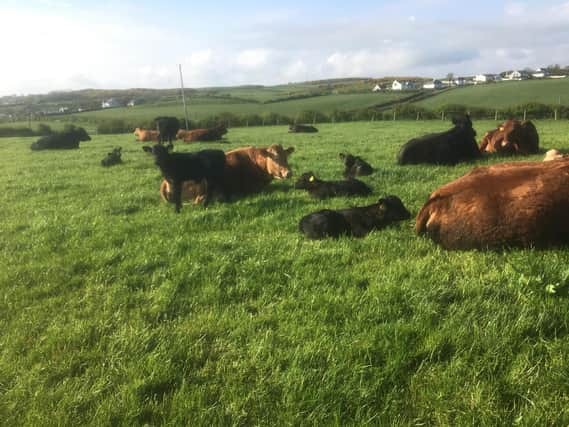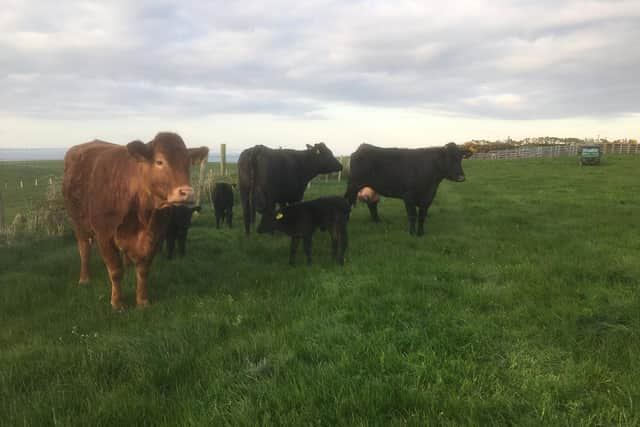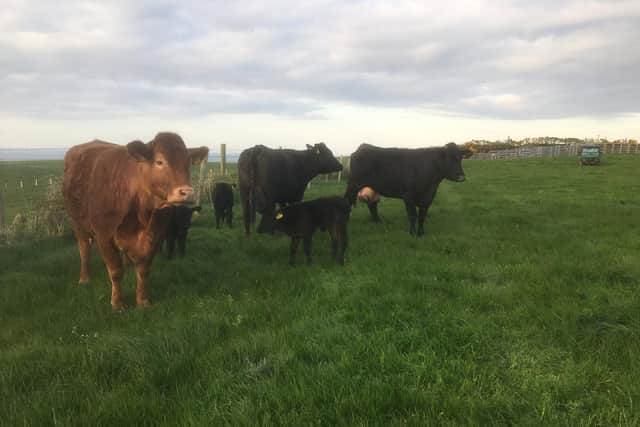Aberdeen-Angus cattle deliver simplicity and ease for County Antrim suckler producer


A switch to Aberdeen-Angus sires has been key to the success of Bill Harpur’s suckler enterprise near Portrush.
A former head teacher, Mr Harpur runs a herd of 60 suckler cows, comprising Limousin crosses and Simmental crosses, with everything put to an Aberdeen-Angus bull.
Advertisement
Advertisement
He previously bought in continental stores for finishing, however he started transitioning to a suckler herd on his 170-acre farm just over 20 years ago when the meat company he supplies – Linden Foods – started up its Aberdeen-Angus scheme.


Mr Harpur says he has not looked back since and he has been impressed with the easy-calving nature of the Aberdeen-Angus breed, the docile nature of the bulls, and the breed’s ability to finish on less feed than the continental stores he previously reared.
“The breed works really well for me,” adds Mr Harpur.
“I’ve never had an aggressive or difficult-calving bull, and I really like the temperament of the cattle; I can see a real difference with the Aberdeen-Angus crosses in comparison to the stores I used to buy.”
Careful selection


Ease of management is key for Mr Harpur, who works alone at the farm with the exception of the use of contractors and some casual labour.
Advertisement
Advertisement
He houses cattle for around half the year between November and the beginning of May, and calving takes place over a tight two-month period in April and May.
Previously, Mr Harpur tried breeding his own replacements but found he was restricted due to the size of his herd.
He now buys in approximately 15 eight- to nine-month-old heifer calves every October and then whittles them down to a group of eight or 10 to keep as replacements.
“I go out to the suckled calf ring and buy in what I think would make suitable heifer replacements,” explains Mr Harpur.
Advertisement
Advertisement
“They’re predominantly Limousin cross and Simmental cross heifers from suckler herds, and the ones I decide to keep go to the bull the following July when they’re approximately 16-months-old.”
All heifer calves are pelvic scored to help decide which ones to keep – a measure Mr Harpur has been using for the past six years with great success. “My aim is that by pelvic measuring those heifers, I won’t have to use the calving jack on them,” explains Mr Harpur.
At calving time, he is very strict about which animals he will keep for further breeding – anything that requires the calving jack twice will not be bred from again, and any cow with engorged teats, which needs extra attention to get the calf suckling, will not be kept after she rears that calf.
“Since using Aberdeen-Angus bulls, I’ve very rarely had to assist an animal with calving and the calves just want to live; they aren’t lying about needing assistance and they’re full of vigour,” says Mr Harpur.
Advertisement
Advertisement
“And by being pretty ruthless with calving – I require the cow to calve unassisted, get the calf up and get it sucking – I’ve discovered that you replace fewer cows and I’ve got a reappearance rate of 88% in my herd.”
Finishing on less inputs
The switch from finishing bought-in continental stores to home-bred Aberdeen-Angus cross cattle has resulted in animals finishing earlier and on less inputs, says Mr Harpur.
“There’s never any bother fleshing an Aberdeen-Angus,” he adds.
“Their continental cross mothers give them frame, while the Aberdeen-Angus bull provides fleshing and marbling – this means they’re finishing about five months earlier than the continental stores I had before.”
Advertisement
Advertisement
When out at grass, the cattle are run on a three-day paddock grazing system and Mr Harpur’s grass swards include white clover – something he says has helped reduce his fertiliser use by a third.
The finishing ration for the home-bred Aberdeen-Angus crosses comprises 2-3kg of home-grown barley at 10% protein per day, plus good-quality silage.
“On this diet, my heifers are going away at 21-22-months-old, and the steers are going for slaughter at 21-24-months-old,” says Mr Harpur.
This compares to finishing continental stores at 24-month-olds on a ration of 6-7kg of meal a day, or at 27-28-months-old if the ration comprises 2.5kg of meal a day.
Advertisement
Advertisement
“I could keep my Aberdeen-Angus crosses longer, but last year’s calves are coming off the cows in March and they need to go into the accommodation that’s occupied by the finishers,” says Mr Harpur.
“They’re averaging 330-340kg deadweight and my proud boast is that anything the animals eat, I’ve produced myself on this farm.”